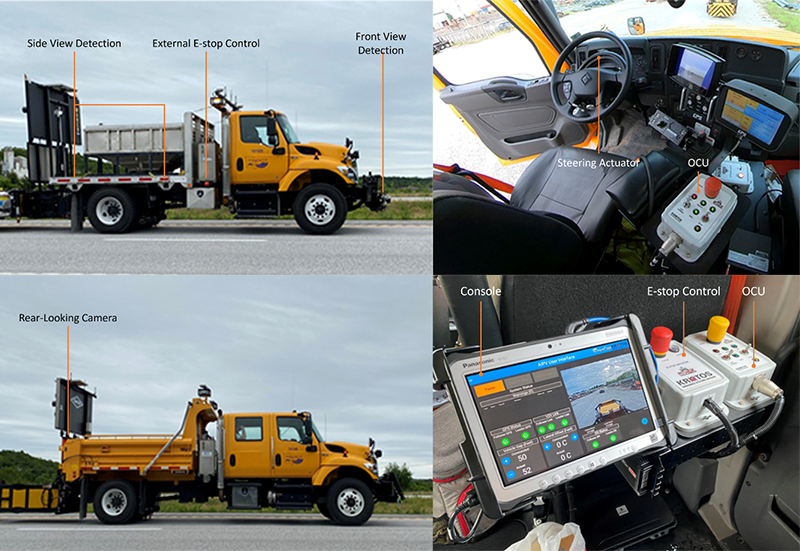February 07, 2023

Using a self-driving truck to follow a manned vehicle has the potential to reduce worker injuries in mobile work zones, a Mizzou Engineering team has concluded.
Henry Brown, a research engineer in the Department of Civil and Environmental Engineering, is presenting the findings to the Missouri Department of Transportation (MoDOT).
Moving work zones such as pavement striping typically involve a series of vehicles, with the last truck at most risk of being in a wreck. MoDOT uses mounted crash cushions known as truck mounted attenuators (TMAs) to absorb impact, however dozens of injuries still occur each year.
“We want to eliminate worker injury by getting the driver out of the last vehicle,” Brown said. “The idea is you pair the last two vehicles as a leader and a follower retrofitted with kits that allow the second vehicle to follow GPS crumbs from the vehicle in front of it.”

From a tablet inside the leader vehicle, an operator controls the follower truck, including setting its speed and maintaining its distance. The follower truck has front and side obstacle detection systems, and the system also includes controls to allow workers to stop the vehicle in emergencies.
As part of the study, Brown and colleagues surveyed other states around the use of autonomous work vehicles. Of 43 states that responded, 19 are exploring the idea, while 20 are not and four are pursuing. In addition to Missouri, Colorado, Rhode Island and North Dakota are using or in the process of implementing the leader-follower model.
“Most agencies that have implemented the system are generally satisfied with it,” Brown said. “Other states want more information on performance and costs. And some states would need changes in the law to allow drivers to be taken out of follower vehicles.”
MoDOT employees interviewed about the idea of self-driving follower vehicles were generally optimistic about the potential of improving work zone safety, the study found. The employees offered suggestions for possible enhancements to the system, such as a supplementary lane assist system and additional cameras on the follower vehicle to help the system operator monitor traffic.
“Overall, the study findings indicate that the leader-follower system has the potential to be an effective tool to improve safety in mobile work zones,” Brown said. “If the driver is removed from the follower truck, we’re reducing exposure to risk. Even if the driver remains in the follower vehicle, the system would allow the driver to focus more, improving safety.”
Praveen Edara, professor and chair of civil and environmental engineering, and Professor Carlos Sun, were co-PIs on the research. The final report will be submitted in March, at which time MoDOT will determine how to proceed.
Learn more about civil and environmental engineering at Mizzou.